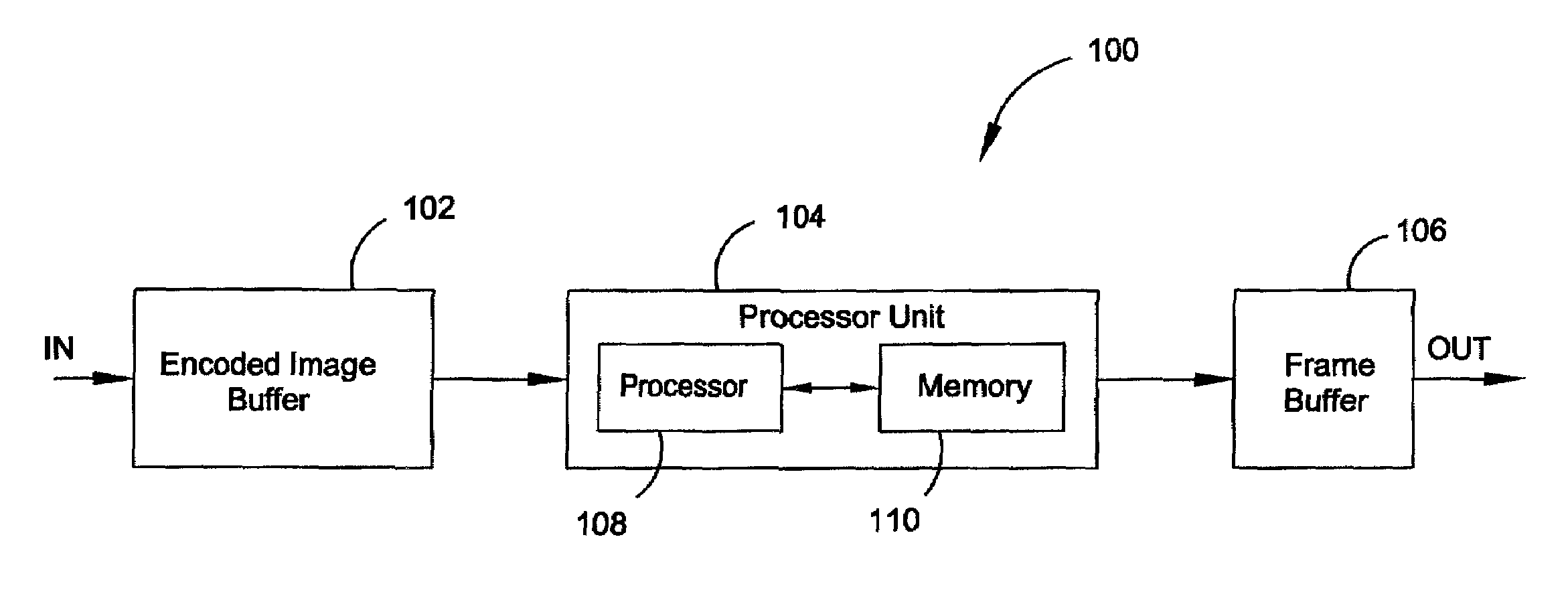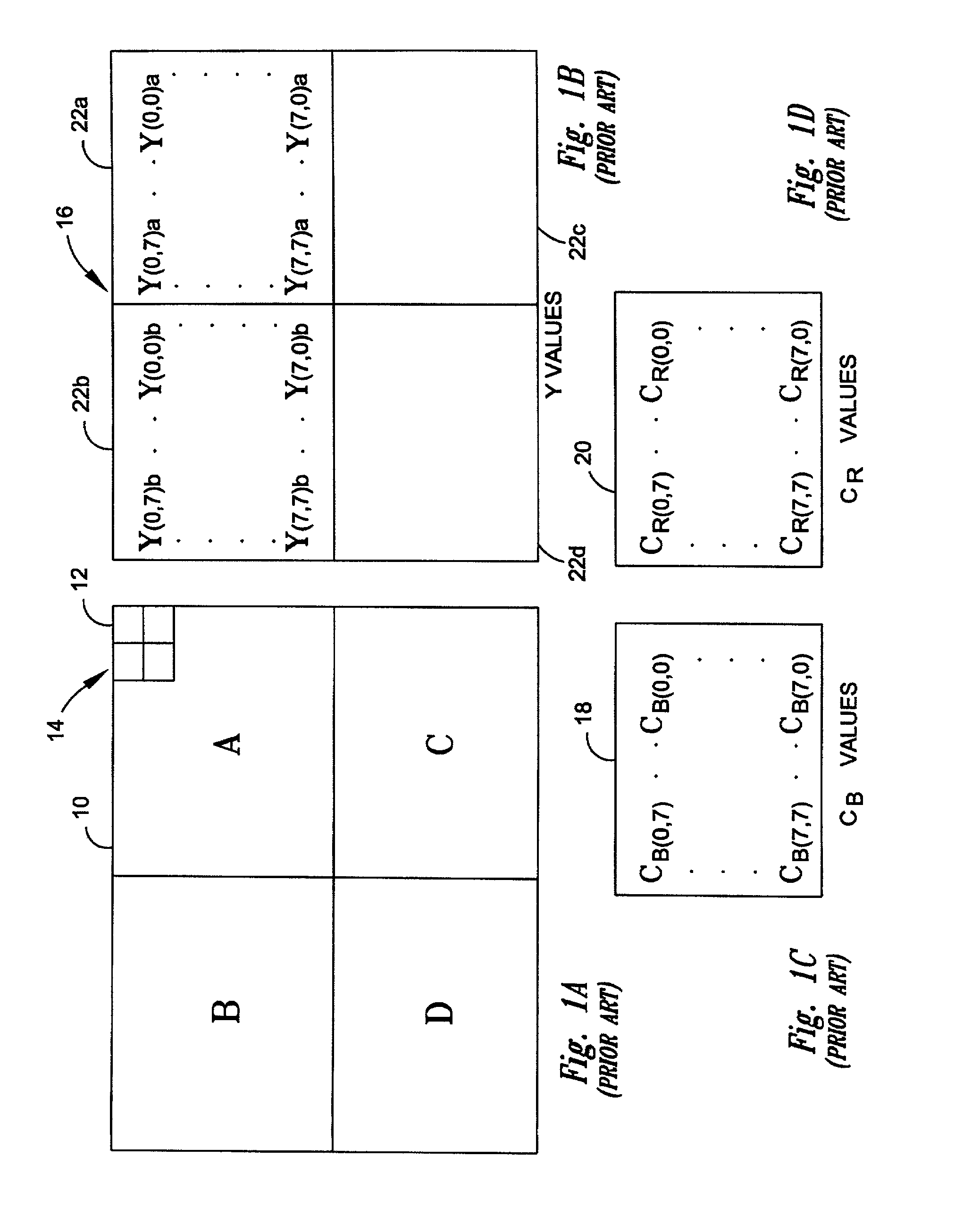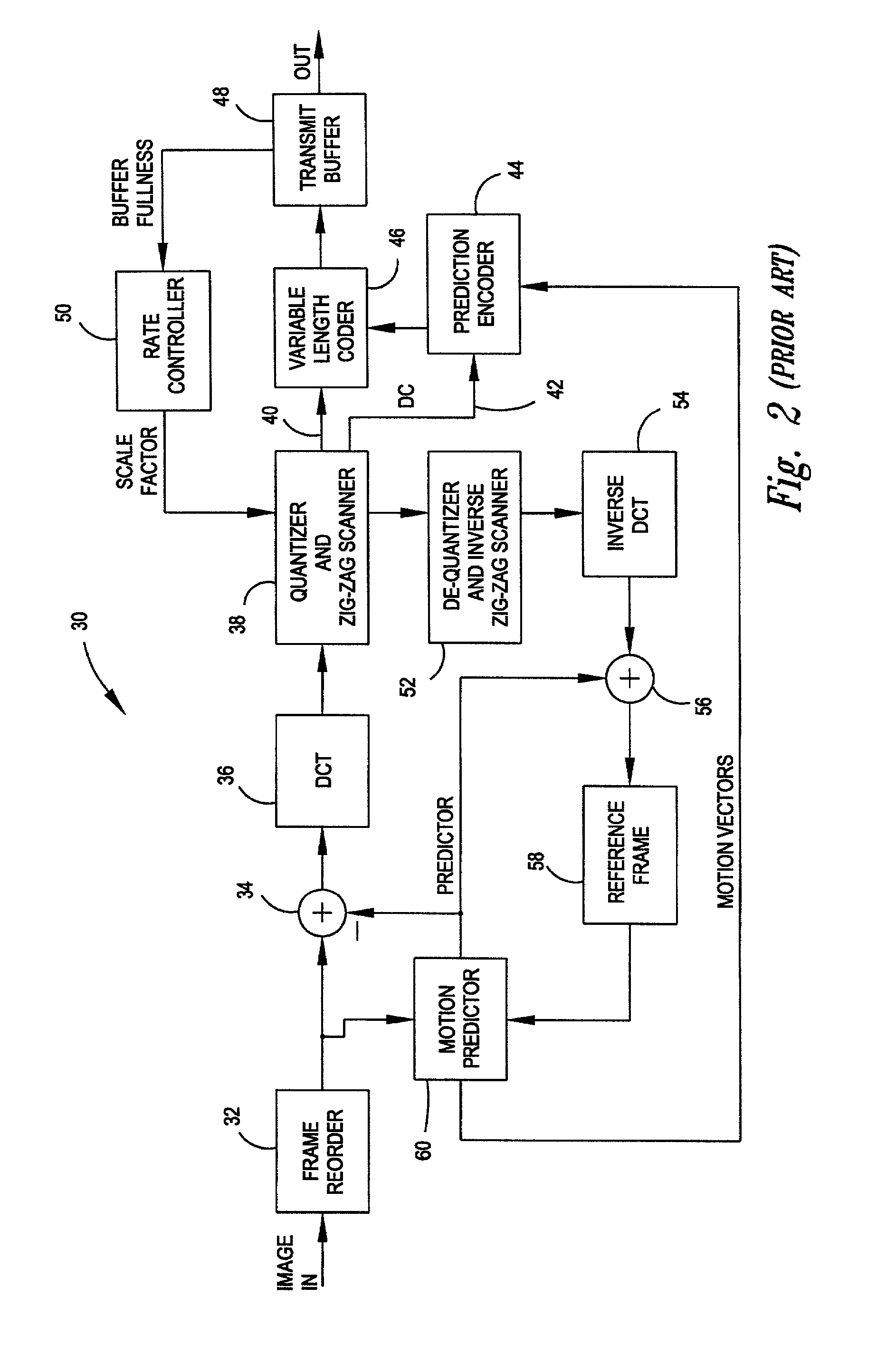Circuit and method for performing a two-dimensional transform during the processing of an image
a two-dimensional transformation and image processing technology, applied in the field of image processing circuits and techniques, can solve the problems of increasing the cost and overall size of the processor, the size of the processor's arithmetic unit and its internal data busses, and the relatively complex architecture of the processor to execute these complex image-processing functions. the effect of reducing the image-processing tim
- Summary
- Abstract
- Description
- Claims
- Application Information
AI Technical Summary
Benefits of technology
Problems solved by technology
Method used
Image
Examples
Embodiment Construction
[0082]FIG. 12 is a block diagram of an image decoder 100 according to an embodiment of the invention. The decoder 100 significantly decreases Masaki's IDCT time by calculating and transposing the intermediate inverse-transform values I′ in the same step as discussed below in conjunction with FIG. 17. That is, the decoder 100 generates the block 86 (FIG. 9) of transposed values I′ directly from equation (13), and thus omits the generation of the blocks 82 (FIG. 7) and 84 (FIG. 8). The decoder 100 may further decrease Masaki's IDCT conversion time by calculating, transposing, and even-odd separating the intermediate inverse-transform values I′ in the same step as discussed below in conjunction with FIG. 18. That is, the decoder 100 generates the block 88 (FIG. 10) of transposed values I′ directly from equation (13), and thus omits the generation of the blocks 82, 84, and 86.
[0083]The decoder 100 includes an input buffer 102, a processor unit 104, and an optional frame buffer 106. The ...
PUM
 Login to View More
Login to View More Abstract
Description
Claims
Application Information
 Login to View More
Login to View More - R&D
- Intellectual Property
- Life Sciences
- Materials
- Tech Scout
- Unparalleled Data Quality
- Higher Quality Content
- 60% Fewer Hallucinations
Browse by: Latest US Patents, China's latest patents, Technical Efficacy Thesaurus, Application Domain, Technology Topic, Popular Technical Reports.
© 2025 PatSnap. All rights reserved.Legal|Privacy policy|Modern Slavery Act Transparency Statement|Sitemap|About US| Contact US: help@patsnap.com



